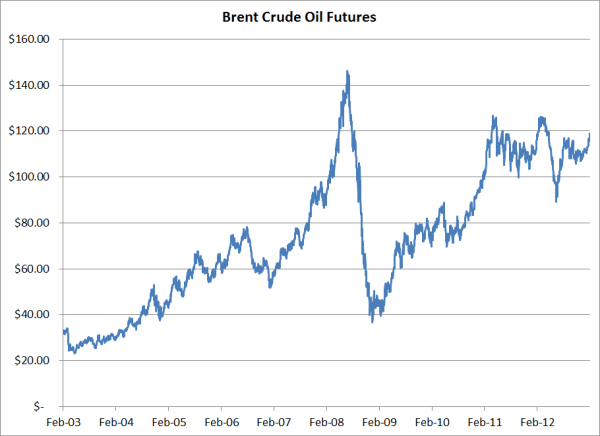2 min read
The Case For Employing A Dynamic Fuel Hedging Program
Historically, many large fuel consuming companies have utilized passive fuel hedging strategies but, companies who "hedge and forget it" often accept...
2 min read
Mercatus Energy : Jul 27,2016

In a previous post, An Alternative Oil Hedging Strategy Using Three Way Collars, we explored how oil and gas producers can implement a conservative hedging strategy utilizing a combination of call and put options to structure a strategy known as a three-way collars. Today we're going to explain how large fuel consumers, such as airlines, can also use three-way collars as a conservative fuel hedging strategy.
Traditionally, many large fuel consumers such as airlines, hedge their fuel price risk with swaps and costless collars. If you’re not familiar with costless collars, when a fuel consumer hedges with a costless collar they are purchasing a call option (cap) and selling a put option (floor). The call option provides the airline with a hedge against higher jet fuel prices while the sale of the put option offsets the cost of the call option, hence the reason that the strategy is considered costless. But as we all know, there is no free lunch. In this case, the sale of the put option also subjects the airline to significant downside exposure in if jet fuel prices decline significantly, exposure which can lead to less than desirable cash flow and margin issues.
To put it into numerical context, let's consider the case of an airline which is considering hedging with a traditional costless collar on US Gulf Coast jet fuel with a cap (call option) of $1.40/gallon and a floor (put option) of $1.10/gallon. In this scenario, the airline is well hedged if US Gulf Coast jet fuel trades above $1.40/gallon, "at risk" if prices trades below $1.10/gallon. In between $1.10 and $1.40 both options are out-of-the-money. Clearly, a traditional collar works well if prices rise but can cause significant pain (i.e. cash flow issues, higher fuel costs than competitors, etc.) in a lower price environment.

If the airline wants to utilize a more conservative hedging strategy than a traditional costless collar, they can reduce their downside exposure (risk) by purchasing a further out of the money put option (floor) which would reduce their downside risk to the difference in the strike prices of the two put options.
Building on the previous example, if the airline entered into the same costless collar ($1.40 cap and $1.10 floor) and purchased an additional put option (floor) at $0.95/gallon for a premium of $0.0250/gallon, their risk, should US Gulf Coast jet fuel trade below $0.95, would be limited to $0.15/gallon ($1.10 - $0.95 = $0.15) with an option premium (out of pocket) cost of $0.0250/gallon. To summarize, under the three-way collar, if US Gulf Coast jet fuel settles at $0.80/gallon, the airline would owe incur a loss of $0.30/gallon on the $1.10 put option and would incur a gain of $0.15 on the $0.95 put option, hence the net loss of $0.15.

As the graph above shows, the traditional, costless collar provides the airline with the lowest fuel cost when US Gulf Coast jet fuel prices rise significantly or settle within or near the $1.10 to $1.40 collar. On the other hand, if US Gulf Coast jet fuel prices decline significantly, the three-way collar is clearly produces better results due to the purchase of the additional put option. Said another way, if the airline determines that they are comfortable with the exposure created by the $1.10 put option, the costless collar might be their preferred hedging strategy. However, for an airline who is not comfortable with the potential negative consequences associated with the $1.10 put option, the three-way collar will allow them to mitigate their discomfort while remaining well hedged above $1.40/gallon and keeping the option premium cost to a minimum.
While this post focuses on how airlines can utilize three-way collars to hedge their jet fuel price risk, the same methodology can also be utilized to hedge diesel fuel, gasoline, etc.

2 min read
Historically, many large fuel consuming companies have utilized passive fuel hedging strategies but, companies who "hedge and forget it" often accept...
1 min read
If you follow our blog, you know we're energy hedging and risk management junkies. You're also familiar with our opinions on various energy hedging...

2 min read
Given the recent decline in crude oil prices, and in turn, diesel fuel prices, we thought it would be beneficial to address various diesel fuel...